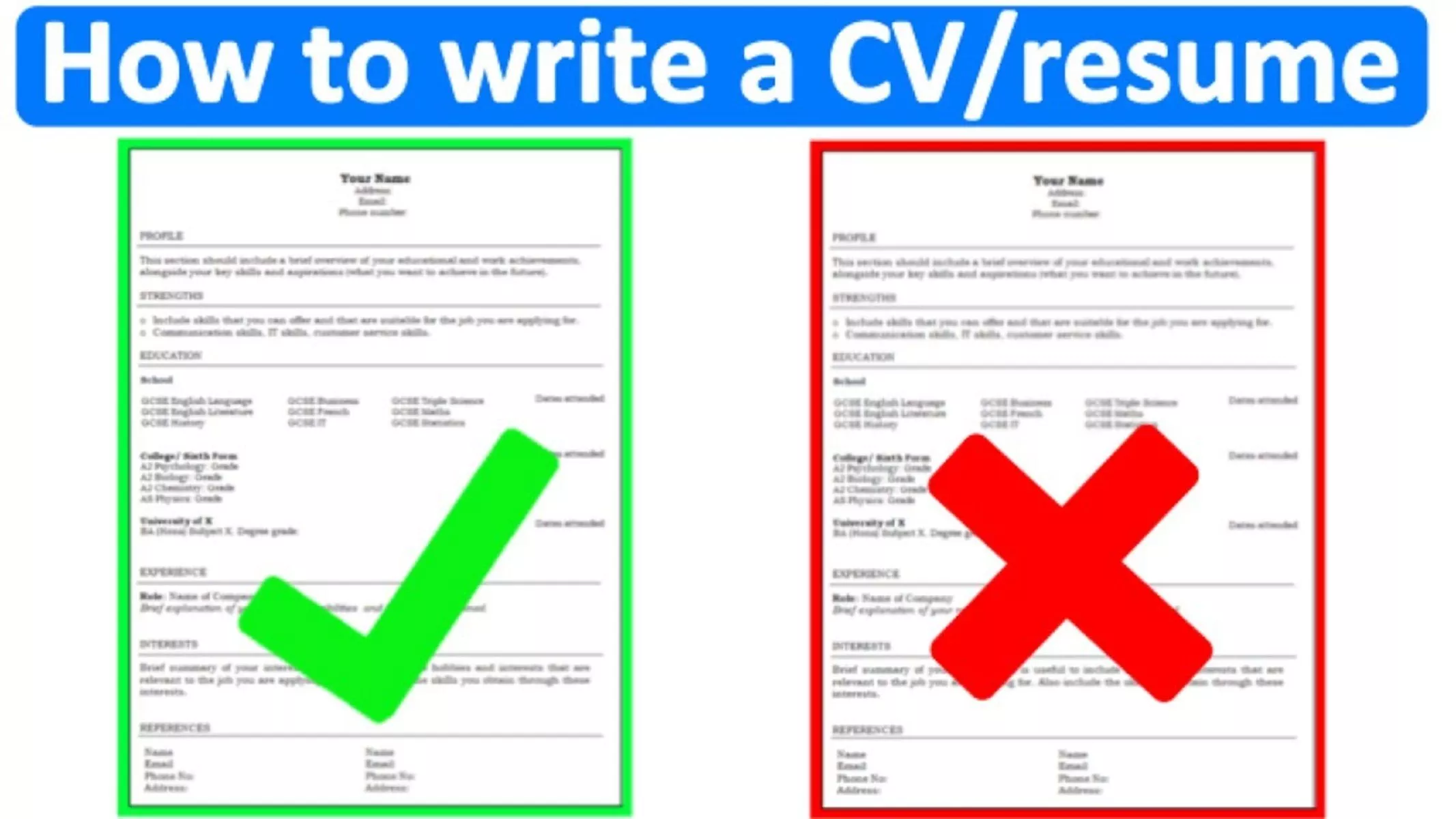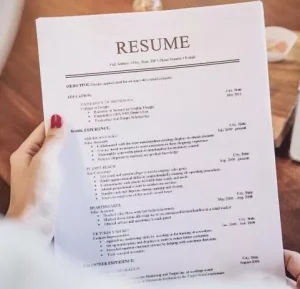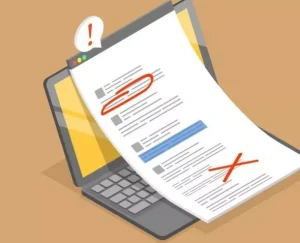Career
How To Write A Resume or CV & Get 100% Job

Last Updated on April 26, 2023 by Robert C. Hoopes
How To Write A Resume or CV: Looking for a new career opportunity? Want to impress your prospective employer right off the bat? A winning resume may make or break your career. If you want to secure your ideal job, you need a resume that stands out from the crowd and gets you noticed by recruiters.
When you have no idea how to begin or what information to put in your resume, the effort might seem unattainable. If you want to get your ideal job, your resume is one of the most important documents you will ever create. In this article, we will show you how to write a Resume or CV that will get you an interview with any company.
Types of Resumes

Chronological resumes, functional resumes, and combination resumes are the three most used formats.
1) Chronological Resumes: The standard resume format follows a chronological format. Your employment history is shown there, beginning with your most recent position held.
2) Functional Resumes: In contrast to chronological resumes, functional resumes highlight your abilities and successes instead of your career history. Ideal candidates or student will be making a career transition or have significant time gaps in their job experience.
3) Combination Resumes: The combo resume incorporates elements from both the chronological and functional styles. It provides an overview of your qualifications and job history in reverse chronological order.
Choosing the Right Resume Format

Think about the position you’re looking for and your previous work experience when deciding on a resume format. A chronological resume may be the ideal option if, for instance, you have extensive work experience and are looking for a position in the same area. But if you’re making a job switch or have significant gaps in your work history, a functional or hybrid resume would be the better choice.
1) Sections of a Resume
The following parts are essential for a well-organized resume:
2) Contact Information
You should provide your complete name, email, phone number, and physical address here. Avoid using a nickname or anything else that might be seen as unprofessional if you want to be taken seriously online.
3) Professional Summary/Objective
A concise summary of your professional qualifications and aspirations should be included here. Those with years of experience in the workforce should focus on their professional summary, while those with less job history should focus on their aim.
4) Work Experience
Your employment history here should begin with your most recent position held. Be sure to provide the firm name, your job title, and the dates you worked there for each job you’ve had. Include a bulleted list of your duties and accomplishments for each position you’ve had.
5) Education
In this area, you should detail your academic credentials such as degrees earned, schools attended, and time spent there. Any related courses, academic awards, or professional certifications may also be included.
6) Skills
Ability In this part, you should elaborate on your technical and soft abilities. Include your qualifications in bullet points, emphasizing the most relevant experience for the position you’re applying for.
Tips for Writing an Effective Resume
1) Choose the Right Format
It is important to choose a resume format before beginning to write your resume or CV. Chronological, functional, and combination forms are the three most used ones. Most resumes are written in chronological order, which is great if you have an extensive job history to highlight. If you have a gap in your employment history or are switching professions, the functional resume structure is the way to go. The combination format has elements of both and is best for persons with extensive experience in the field.
2) Include Your Contact Information
Your contact information should be clearly displayed at the top of your resume. The whole name, complete address, phone number, and email address are all required. Make sure this is readily available and that your email address is appropriate for a professional setting.
3) Write a Strong Objective Statement
Your goal statement should be brief yet informative, outlining your qualifications and selling yourself to a potential employer. It ought to be focused on the position you are looking for and showcase relevant skills and expertise.
4) Highlight Your Relevant Skills and Achievements
Your qualifications and history of success will set you above other candidates for the position. Make use of bullet points when listing your relevant experience and qualifications. Provide concrete evidence of your success by using concrete instances and numbers. Change phrases like “Improved customer service” to “Improved customer satisfaction ratings by 20%,” for instance.
5) List Your Work Experience
Provide your employment history in reverse chronological order, with your most recent position first. You should include your job titles, the names of the companies you’ve worked for, the dates you were employed there, and a short summary of your duties and accomplishments for each position. Pay attention to the talents and experiences that are directly applicable to the position you are looking for.
6) List Your Education
All of your academic accomplishments should be mentioned from most recent to least. Don’t forget to mention where you got your degree and when you graduated. Include relevant courses and any academic awards you may have received.
7) Include Additional Sections
Depending on your level of professional experience, you may need to expand your resume’s scope. Include a section on publications or presentations, for instance, if you have written any articles or given any talks. Include a section on volunteer work or community involvement if you have done either.
8) Keep it Concise
The maximum length of a resume is two pages. In order to make it brief and simple to read, use bullet points and short phrases. Choose a standard business typeface like Times New Roman, Arial, or Calibri and maintain consistent formatting throughout.
9) Proofread Your Resume
Next, you should check your resume for typos and other mistakes by proofreading it. If you want to be sure no errors were overlooked, have someone else read it. Having a resume or a CV that is well-written and devoid of mistakes might be the deciding factor in getting the job you want.
FAQs
Q: What is the best format for a resume?
Ans: The best format for a resume depends on your individual circumstances. The three most common formats are chronological, functional, and combination. Choose the format that best showcases your skills and experience.
Q: What should I include in my contact information?
Ans: Your contact information should include your full name, address, phone number, and email address. Make sure your email address is professional and easy to read.
Q: What should I include in my objective statement?
Ans: Your objective statement should be clear and concise and should tell the employer what you can do for them. It should be tailored to the job you’re applying for and should highlight your strengths and experience.
Q: How should I list my work experience on my resume?
Ans: Your work experience should be listed in reverse chronological order, starting with your most recent job. Include your job title, company name, dates of employment, and a brief description of your responsibilities and achievements in each role.
Conclusion
In conclusion, putting up a resume might be intimidating, but with these guidelines in mind, you’ll be able to write a resume that will wow any hiring manager. Keep your resume succinct and error-free, and be sure to showcase your relevant abilities and accomplishments for the position you’re looking for. You can make your resume or a CV stand out from the crowd and get the interview for your desired job with just a little time and work spent on it.


